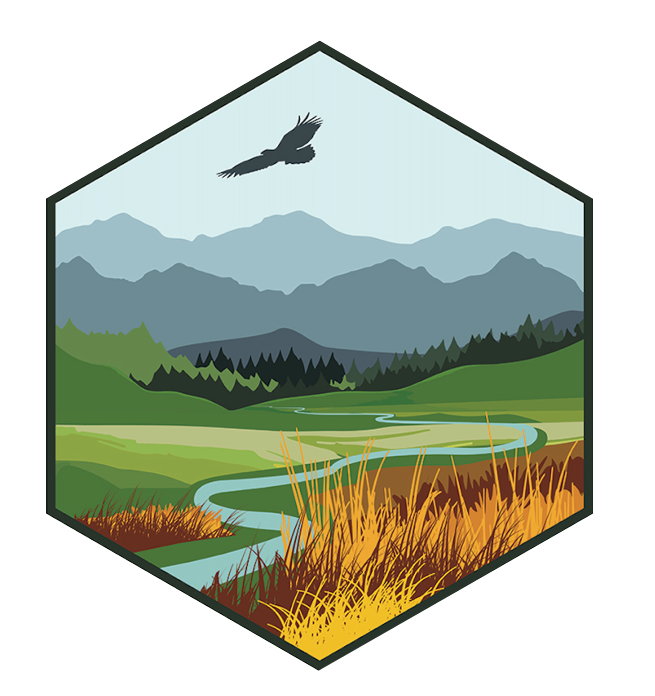This archive contains daily downscaled meteorological and hydrological projections for the Conterminous United States at 1/24-deg resolution utilizing the Multivariate Adaptive Constructed Analogs (MACA, Abatzoglou, 2012) statistical downscaling method with the METDATA (Abatzoglou, 2013) training dataset. The downscaled meteorological variables are maximum/minimum temperature(tasmax/tasmin), maximum/minimum relative humidity (rhsmax/rhsmin)precipitation amount(pr), downward shortwave solar radiation(rsds), eastward wind(uas), northward wind(vas), and specific humidity(huss). The downscaling is based on the 365-day model outputs from different global climate models (GCMs) from Phase 5 of the Coupled Model Inter-comparison Project (CMIP3) utlizing the historical (1950-2005) and future RCP4.5/8.5(2006-2099) scenarios. Leap days have been added to the dataset from the average values between Feb 28 and Mar 1 in order to aid modelers.
The purpose of our project was to identify needs and provide support for states in the North Central region and Idaho to integrate climate science and adaptation into their State Wildlife Action Plans (SWAPs). Our objectives were to: 1) engage with state wildlife agencies in the North Central region and Idaho to identify their needs for climate-informed planning support and 2) collaboratively develop products that will help them better integrate climate adaptation strategies into SWAPs.
The North Central Climate Adaptation Science Center’s (NC CASC) Sagebrush and Climate Change Workshop occurred on August 20 and 21, 2024 at the University of Colorado Boulder, the NC CASC’s university host. The workshop convened experts and partners from a range of agencies, institutions, and geographies to discuss research and synthesis needs in the eastern sagebrush biome in Montana, Wyoming, and Colorado. The workshop was organized to promote discussion and gather input from experts, practitioners and stakeholders/rights holders to inform NC CASC’s science synthesis and research efforts on social-ecological transformation in the eastern sagebrush biome (WY, CO, MT) driven by climate change and other anthropogenic drivers. The primary objectives included: Convene experts and partners from a range of agencies, institutions, and geographies to discuss research and synthesis needs in the eastern sagebrush biome Discuss current management challenges, existing resources, and uncertainties for understanding and responding to threats from climate change and other change drivers Identify specific research and capacity needs that will be the focus of an in-depth multi-year working group effort led by the NC CASC Document compiled and formatted by Hailey Robe (NC CASC)
Data includes monthly-average projected changes to climate for a 23-member ensemble of CMIP6 SSP2-4.5 GCMs downscaled using NASA’s Land Information System. Average snow outputs are generated using these climate projections for 20-year periods between 2016 and 2095. More information on this data, and comparisons versus various community snow projections in mountainous regions can be found in Pflug et al. (2025).
Climate change is enabling increased area burned by wildfires in western US forests. Warm, dry post-fire conditions may limit tree regeneration in some areas, potentially causing a shift to non-forest vegetation. Managers are challenged with managing an increasing land base affected by wildfire, with significant uncertainty about where forests will recover and limited resources for reforestation efforts. Simultaneously, there has been increased focus on post-fire reforestation efforts nationally, as tree planting has become a popular climate-change-mitigation strategy. Therefore, with increased interest and increased need, our project worked to identify where varying approaches to support post-fire tree regeneration are most likely to be successful. Our project focused on western larch, an ecologically and economically important tree species in northwestern USA, and it included an extensive field sampling effort and a field-based planting experiment. From sampling 1651 trees from 57 sites across the Northwest, we found that post-fire regeneration of western larch is more sensitive to wildfire-related factors than seasonal climate conditions. While changes in climate may limit western larch regeneration in some areas, increased area burned by wildfires may promote regeneration of this fire-adapted species. By incorporating models of western larch regeneration into a decision support tool, we have increased the ability of managers to identify locations in post-fire landscapes that are unlikely to regenerate naturally following wildfire due to seed limitations, but which may still maintain a climate suitable for western larch seedlings. The field planting experiment used western larch seedlings from different seed sources to test if planting seedlings from warmer and drier areas may aid adaptation to the warming climate conditions. We found that site conditions were more important than seed source in determining reforestation outcomes and that it is possible to plant seedlings from a lower elevation seed source in higher elevation sites without excessive short-term mortality. Combined, the work will help managers prioritize where to plant seedlings to most effectively use limited resources to promote forest regeneration after wildfires.
This archive includes field data, post-fire recruitment models, and spatial projections of post-fire recruitment probability under different climate and fire severity scenarios produced for Davis et al. (2023). Field plot data ("Davis_et_al_regen_plot_data.csv") includes post-fire regeneration density for eight conifer species from the western US that were surveyed in plots 2-30 years following fire. The final generalized linear mixed models for recruitment probability for each species and for all species combined used to make spatial projections of post-fire recruitment probability in Davis et al. 2023 are inlcuded as .rds files. Spatial projections of recruitment probability made with the final models for 10-years post-fire under four climate scenarios (1981-2000, 2001-2020, 2031-2050 RCP 4.5, 2031-2050 RCP 8.5) and two fire severity scenarios (low severity: 10 m to a seed source, 30% surrounding live tree cover within 300-m radius of plot, relativized burn ratio (RBR) of 100; high severity: 150 m to a seed source, 10% surrounding live tree cover within 300-m radius of plot, RBR of 400). Spatial projections are made for all study species combined ("all") and for each individual species. Please see the metadata file for each dataset in the dryad repository ("Davis_et_al_postfire_recruitment_plot_data_2022.xml and "Davis_et_al_postfire_recruitment_projections_2022.xml") for detailed descriptions of the datasets and their components.
Climate change is expected to influence aquatic habitats and associated fish populations, yet we know little about the impact on recreational anglers. Our goal was to explore whether interannual fluctuations in waterbody surface area and other explanatory variables could be used as indicators of changes in angler fishing effort. Our approach leveraged a combination of remotely sensed waterbody surface area, environmental and fish population data, and onsite angler survey monitoring data for Devils Lake, North Dakota, USA during the open-water fishing period (May 1st to August 31st) for 9 years (1992–2021). The information was used to develop a dynamic waterbody size-angler effort model. Changes in waterbody surface area reliably predicted changes in angler effort (r2 = 0.60). Increases in waterbody surface area led to increases in angler effort, and decreases in waterbody surface area led to decreases in angler effort. Our findings show promise that remotely sensed fluctuations in waterbody surface area could be used as an indicator of interannual angler effort dynamics. Dynamic waterbody size-angler effort models could provide managers the ability to predict changes in angler effort via climate-related hydrological cycles that affect the size and distribution of waterbodies on the landscape.
From a resource management perspective, climate change is considered to be one of the main threats to high-elevation ecosystems. However, these valuable ecosystems present unique challenges to climate change adaptation (actions in response to environmental change and its effects in a way that seeks to reduce harm) due to their rugged and remote characteristics. Within this context, we summarized literature on climate change impacts and adaptation actions across U.S. Rocky Mountain high-elevation ecosystems to address the important question: What are the knowledge gaps for climate change responses within this ecosystem that limit the ability of natural resource managers to perform successful climate change adaptation? In addressing this question, we focus specifically on the U.S. Rocky Mountains but also place regional conclusions for climate change adaptation in high-elevation ecosystems into a broader context. Overall, we found that the complex topography and temporally variable climate of mountains promote potential refugia that may buffer alpine obligate species in the near-term but also challenge resource managers to consider biological lags within this ecosystem.
This dataset contains the accumulated stream survey data collected to identify climate impacts to fish communities and assess stream restoration as a potential climate-change mitigation action across the Great Plains and High Desert of Wyoming and Montana (2021-2024). We also provide data of incidental observations of amphibians, reptiles, crayfishes, and mussels seen while conducting fisheries work, as well as structured surveys for amphibians and crayfishes. Habitat data for many sites is also provided.
Soil organic carbon ("SOC") in drylands comprises nearly a third of the global SOC pool and has relatively rapid turnover and thus is a key driver of variability in the global carbon cycle. SOC is also a sensitive indicator of longer-term directional change and disturbance-responses of ecosystem C storage. Biome-scale disruption of the dryland carbon cycle by exotic annual grass invasions (mainly Bromus tectorum, "Cheatgrass") threatens carbon storage and corresponding benefits to soil hydrology and nutrient retention. Past studies on cheatgrass impacts mainly focused on total C, and of the few that evaluated SOC, none compared the very different fractions of SOC, such as relatively unstable particulate organic carbon (POC) or relatively stable, mineral-associated organic carbon (MAOC). We measured SOC and its POC and MAOC constituents in the surface soils of sites that had sagebrush canopies but differed in whether their understories had been invaded by cheatgrass or not, in both warm and relatively colder ecoregions of the western USA. MAOC stocks were 36.1% less in the 0-10 cm depth and 46.1% less in the 10-20 cm depth in the cheatgrass-invaded stands compared to the uninvaded stands of the warmer Colorado Plateau, but not in the cooler and more carbon-rich Wyoming Basin ecoregion. In plots where cheatgrass increased SOC, it was via unstable POC. These findings indicate that cheatgrass effects on the distribution of soil carbon among POC and MAOC fractions may vary among ecoregions, and that cheatgrass can reduce forms of carbon that are otherwise considered stable and 'secure', i.e. sequestered.

